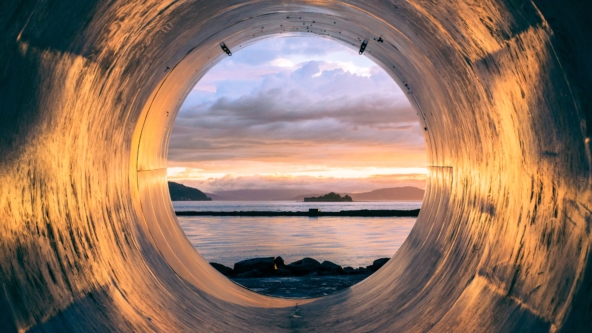Solar provides a large chunk of our renewable energy, but there are times when generation is low (such as at night), and this is when anaerobic digestion picks up the slack.
So far we have six anaerobic digestion sites, with a combined capacity of around 5 MW. As more of you join our green tariffs, this will rise.
So how does it work?
We take organic waste (dead plants, for example), add some hungry microorganisms, put them in an airtight container without any oxygen (the “anaerobic” bit), warm things up a little, and let nature do its thing…
Over time, the microorganisms break down, or “digest”, the organic material, producing a mixture of gases called biogas. We collect the biogas for use later, while the solid stuff left over can be processed and made into ethanol (which can be used as vehicle biofuel) or fertiliser.
To get electricity from anaerobic digestion, we burn the biogas in generators. While this does produce CO², it’s still a renewable, carbon-neutral process. All the CO² released was absorbed by the organic material during its lifecycle, and when new material grows the CO² is reabsorbed. Contrast this with drilling deep underground to release natural gas that took millions of years to form, and which can’t be reabsorbed at the scale it’s being burnt.
More importantly, biogas is mostly methane – a much more potent greenhouse gas than CO² – which during natural decay would’ve entered the atmosphere. By capturing the methane and converting it to CO², we generate electricity while preventing methane from escaping into the atmosphere.
What goes into the “digesters”?
The stuff the microorganisms feed on is called the feedstock. Our feedstocks include farm waste, cow and chicken manure, vegetable cut-offs or rejects, and food waste from local communities. The specific waste will depend on what’s available at the time.
Some of our biogas plants also use a proportion of purpose-grown crops such as rye, maize, or grass. While it’s great that we can find a second use for our waste, we don’t always have enough, nor is it of the right quality, to produce large volumes of gas. Adding crops to the feedstock massively increases the amount of biogas for very little extra cost.
Are there any downsides to AD?
Some people argue that anaerobic digestion isn’t totally carbon neutral, that growing and transporting the material used in the digestors involves some carbon output. Yes, there will be some carbon output associated with growing and transporting the feedstock, but compared to the carbon and methane released had fossil fuels been used and the biogas allowed to escape into the atmosphere, it’s exceedingly small.
Others suggest that growing energy crops is a waste of arable land that should be used for growing food, or for grazing livestock. We’ve seen this type of objection before over the use of solar panels, and it grossly overstates how much land is actually used for growing AD feedstock.
According to government figures for maize, just 1% of total arable land area is used for AD feedstock. And again, the alternative is to continue burning fossil fuels which leads to global warming and its catastrophic effects on the planet.
AD generation is just one of the many renewable technologies we support. There’s no single renewable solution that gives us all we need (not yet, anyway), and perhaps small-scale distributed renewables are the answer, of which AD is a great candidate.
Either way, you can be sure that we’ll continue to generate renewable energy for our green customers in the most efficient and environmentally-friendly way possible.


